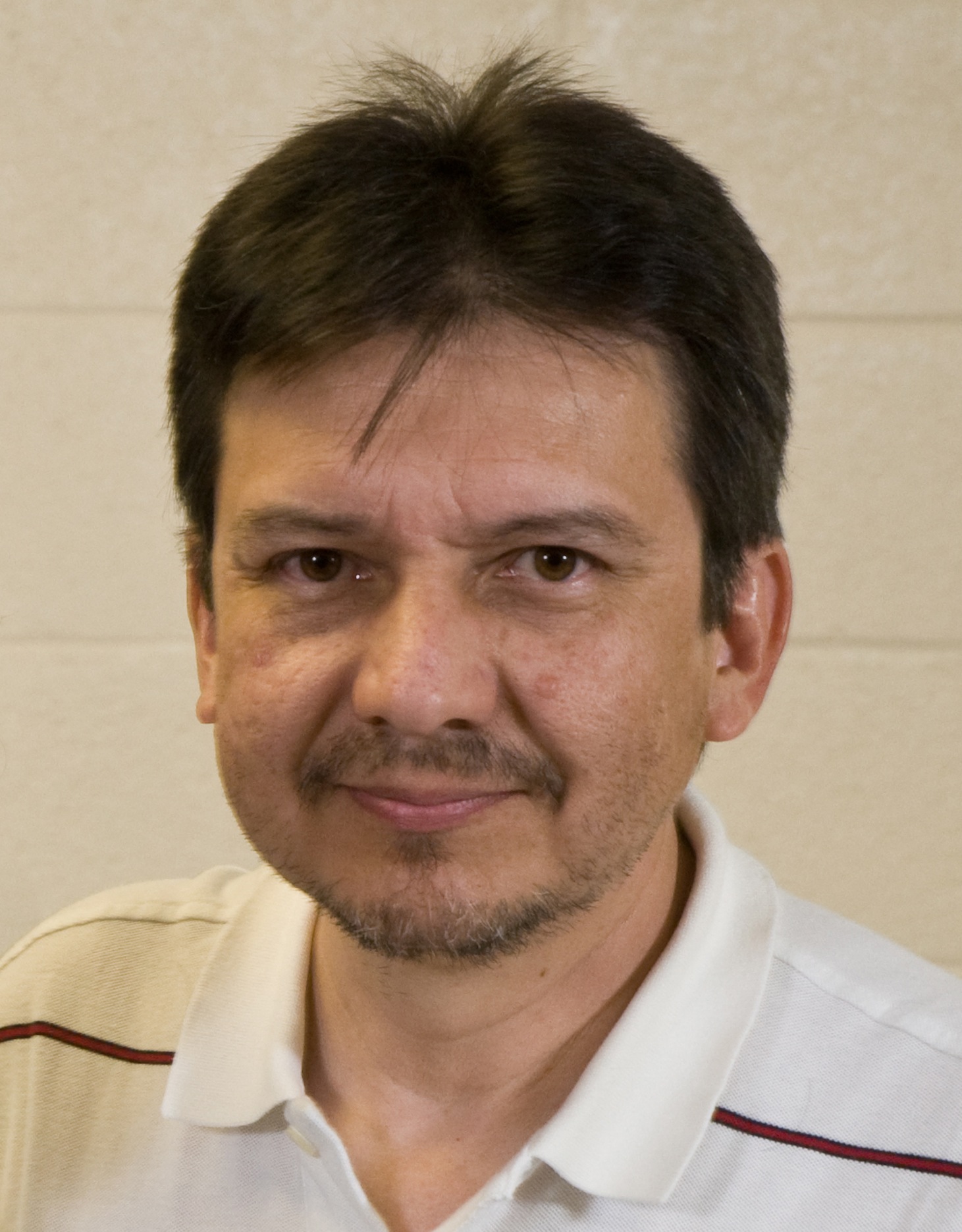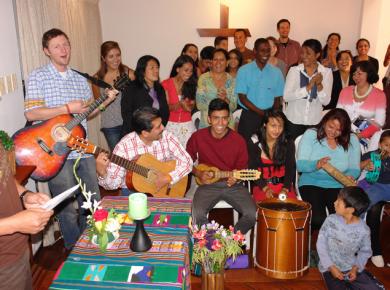Posted: October 19, 2013
Exploring our shared commitment to worship
As a global communion of Anabaptist-related churches, we share a common commitment to gathering regularly for worship. Yet our tremendous diversity means that we carry out this commitment in very different ways. In the October 2013 issue of Courier/Correo/Courrier, leaders from across our fellowship write about different ways in which Anabaptists approach worship - the sights and sounds, the challenges and the blessings.
Integrating All Areas of Life
Plant a new church? Yes, but... what style of worship service will we follow? This was the question asked by several people twelve years ago, when we became interested in starting the Quito Mennonite Church. These people came from different traditions of faith and so the question was one that required real reflection.
The answer to this question was a challenge for several reasons. One is that in Ecuador, like in the rest of Latin America, the typical worship service of evangelical churches reflects the influence of the “movement of worship and praise” brought from the United States during the 1980s. Aspects of this worship service include professional musicians, classical instruments, songs that start on the same note with which the one before ended, a designated “time to praise” for soft-rhythm songs, prophetic songs called the “new song,” Hebrew dance, the use of fags, shouts of joy (like warriors who have won a battle) and war-mongering songs, among others. We did not want to replicate this kind of service entirely, as some of its aspects are not consistent with our Anabaptist principles.
A second reason why the question was challenging is that churches of historical origin - Catholic, Lutheran, Anglican, and Presbyterian - follow a worship service that was not flexible for improvisation.
The people who came to the new Quito church appreciated the Anabaptist tradition and, even though they came from different origins, wished for the Latin American identity to be reflected in the worship service.
Due to all of these considerations, the church of Quito rescued the Latin American rhythms, including son cubano (Cuba), chamame and tango (Argentina), sanjuanitos and pasillos (Ecuador) and guabinas and cumbias (Colombia. These rhythms are accompanied by local instruments: acoustic guitar, charango, bombo (big drum), maracas (shakers) and a rain stick. Of course, the music of the songs is not all that matters; it is also important that the words to the songs do not contradict the gospel.
Symbols are another aspect of the worship service, and an element to which we gave thought in starting our church. For Latin American peoples, the empty cross is both an expression of identifying with those who suffer, and a symbol of hope. The cross is a reminder of the confrontation of Jesus and the powers; it is also a reminder that we are Christ-centered.
Other symbols are also important. The liturgical colors are ones that come from Ecuadorian indigenous fabrics. These fabrics are placed on a table, so that people may meditate and reflect on the value and beauty of diversity in a world that is surrounded by homogenizing imperial models. The peace candle reminds us that we are the light and are committed to the peace of Christ. The chairs are organized in the shape of a semi-circle and there is no plat- form/stage; both of these elements symbolize an intentional push against the current of a religious context that relates holiness with being closer to the pulpit.
Another aspect of the worship service is the revision of the life of those who are worshipping – in other words, the confession. At Quito, this confession is expressed in a litany inspired in biblical texts that correspond to the liturgical calendar. Such an approach helps us to know that we are walking in the footprints of our Teacher, and it invites those who are involved in armed groups to follow Christ and the way of peace. The confession is not a recitation or a mea culpa; it is a confrontation with the gospel of peace. This part of the service ends in a song of peace and a time for all attendants to greet each other.
The reading of Old and New Testament scripture is another part of the service at the Quito church. In this way, we follow the Anabaptist principle in which scripture interprets itself. This part of the service ends with community hermeneutics, where other interpretations and life experiences are shared.
At the end of the service, we all bless each other with a verbal commitment to announce the gospel of peace and serve in each of our contexts.
The Quito Mennonite Church understands that the worship service integrates all areas of life; these are presented to God and our neighbors, especially those who are in the most need.
 César Moya co-pastors the Quito Mennonite Church in Ecuador with his wife, Patricia Urueña.
César Moya co-pastors the Quito Mennonite Church in Ecuador with his wife, Patricia Urueña.

Comments: